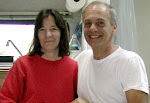Since this was a custom build we had to make decisions about everything. Some of them were standard options that are available on any manufactured motorhome. We opted for solar panels but not a generator because most of the time we're off the grid. We got dual pane tinted windows for comfort and privacy. We didn't get a microwave or an air conditioner because we would rarely use either of them. We tried to get low power users as much as possible such as fluorescent lights and a 12 volt television. We stayed low tech with no slide outs , levelers , automatic steps , GPS or backup cameras to keep everything simple.
One of the main reason that we decided on a custom build was to have it built on the F450 truck chassis rather than the E450 van chassis that is typically used for a class C motorhome.. We wanted the extra room for the passenger and easy engine access. Also 4 wheel drive is a relatively inexpensive option on the F chassis series. 
The framing. More framing members of a thicker gauge metal than is normally used in a manufactured motorhome. 
Neoprene isolators between the truck chassis frame and the motorhome frame. These are similar to the type used in tractor trailers. They should give us a quieter , smoother ride. They will also make it possible to lift the motorhome body off and onto another chassis , although disassembling all of the systems might make that more trouble than it's worth. 
Solar panels – we now have about 240 watts of power. This is 30% more than we had on the Scotty so we’re anticipating a surplus of power except on the shortest ,cloudy days of winter.

Solid oak framing and oak plywood for the cabinets. Most motorhomes this size use paper covered pressboard to save on weight but we wanted more durable materials and we have enough CCC to handle the added weight. 
Propane tank sprayed with truck bedliner. Propane tanks can rust quickly because of condensation. We're hoping that the bedliner will prevent this but it's just an experiment. 
Tow hooks welded to the frame ( just in case! ) 
Auxiliary heater. This little heater uses the engine coolant to keep the living area warm as we're driving. It's controlled with it's own thermostat and located under the dinette seat. Unfortunately it's very noisy so we're going to have to work on a solution to make it quieter.
Copper sink. Most small motorhome sinks are plastic and don't look very nice. We found this one at a RV remolding shop. The owner had brought a few back from Mexico. 
Bookcase. We built a little bookcase in the Scotty and think that it's useful feature that could be added in most motorhomes. There's always a bit of wasted wall space somewhere. 
Computer storage desk. We wanted a safe place to store our laptops while traveling. This also was a solution for controlling the tangle of power wires.
Ken brought up the idea of mounting the TV on a hinged door to give us access to the storage are behind it but he never followed through on it. We decided to do it ourselves. The cabinet shop that made all of the doors made a frame that fit around our TV. We added hinges so that it opened and swung down.
We used baby proof drawer latches to allow the door to open and stay in position at an angle. This makes it easier to see the screen if we’re watching TV in bed.
Undoing the latches gives good access to the storage. The chain (wrapped in tape so it doesn’t rattle) stops the door just in case it comes opened accidently.






I'm about to do the same but to an old Dodge motorhome frame. What's the legality on building your own box part? Didn't know the steps I had to take to make it legal.
ReplyDeleteHi Brett,
DeleteSorry about the late answer. As far as I know there isn't anything that you have to do to make it legal. Once it's finished if you want to get it insured as a RV it may need a special inspection to see if it has the correct components. Some insurance companies require more than others. Also if it's titled as a RV the state may require an special inspection. Since you're starting with a RV frame you might be able to skip all of the inspections. As you can see I don't have the answers, :-D so you should probably check with the motor vehicle division in your state.